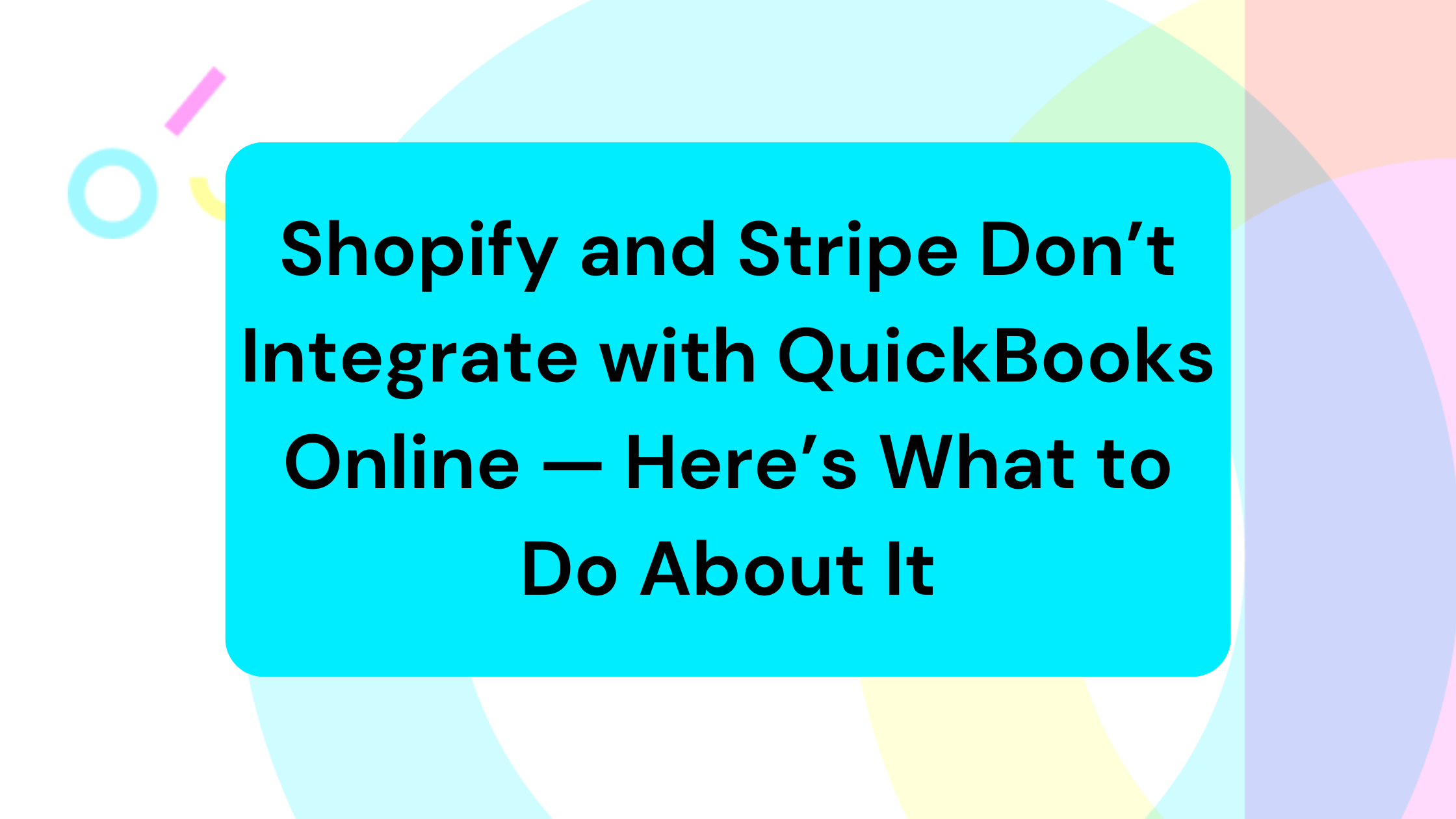For many businesses, Shopify and Stripe are essential tools, one powers eCommerce, the other manages all kinds of payments. But when it comes to accounting, there’s one persistent challenge: neither integrates cleanly with QuickBooks Online (QBO).
That disconnect causes massive friction for finance teams trying to maintain accurate books and clear financial visibility in an efficient way. Let’s unpack why this happens, the problems it creates, and how to solve it.
Why Shopify and Stripe Don’t Play Nicely with QBO
On paper, Shopify and Stripe each offer integrations with QuickBooks Online — but in practice, they rarely deliver the seamless sync accountants expect.
Here’s why:
- Different data models: Shopify records sales orders and payouts, while QuickBooks wants journal entries and deposits. The translation between the two isn’t one-to-one.
- Timing differences: Shopify and Stripe group transactions by payout schedule, not by sale date. That timing mismatch causes confusion in reconciliations.
- Incomplete or summarized imports: Most “connectors” import summarized journal entries instead of detailed transactional data, losing visibility into individual sales, fees, and taxes.
- Foreign currency and platform fees: Stripe’s multi-currency capabilities and Shopify’s various fees (processing, shipping, apps) don’t map cleanly into QBO.
The result? Teams either create a connection that results in a super messy set of books. Or, they spend hours manually downloading CSVs and adjusting transactions just to make the numbers tie out.
The Cost of Manual Workarounds
When systems don’t integrate well, the burden shifts to our teams.
Manual exports, formatting, and uploads lead to:
- Lost time: Reconciliations that should take minutes stretch into hours.
- Inconsistent data: Slight differences in dates, amounts, or classifications create reconciliation headaches.
- Error risk: Every manual step increases the chance of mistakes in your books.
- Delayed visibility: Leadership waits longer for accurate financial reports.
For firms managing multiple clients or entities, this inefficiency compounds quickly, hurting both productivity and margins.
How Amalgam Bridges the Gap
Amalgam was built to solve these exact data-friction problems.
Rather than relying on brittle, one-direction integrations, Amalgam connects directly to Shopify, Stripe, and QuickBooks Online to pull and push data intelligently, with full control and transparency in Excel or Google Sheets.
Here’s how it works:
- Connect your systems once. Amalgam links securely to Shopify, Stripe, and QBO using your own credentials.
- Pull real data directly. Download detailed transactions, not just summaries, into your workbook.
- Normalize and review. Map data consistently across platforms, ensuring everything ties out before posting.
- Push back to QBO. Upload clean, reviewed journal entries directly into the ledger, without manual imports.
The result: a streamlined, reliable workflow that keeps Shopify and Stripe transactions accurate, traceable, and always in sync with QBO.
From CSVs to Confidence
Shopify and Stripe aren’t going to overhaul their integrations anytime soon, and that’s okay. With the right workflow, you don’t need to wait for them to catch up.
Amalgam gives accountants and finance teams the flexibility of spreadsheets with the power of connected systems. You get full visibility, fewer manual steps, and clean, reliable data every time.




